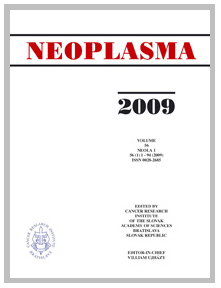Neoplasma Vol.64, No.6, p.945-953, 2017
|
| Title: The value of Gd-BOPTA- enhanced MRIs and DWI in the diagnosis of intrahepatic mass-forming cholangiocarcinoma |
| Author: C. C. Xu, Y. F. Tang, X. Z. Ruan, Q. L. Huang, L. Sun, J. Li |
|
Abstract: The aim of this study is to explore the value of unenhanced magnetic resonance imaging (MRI), gadobenate dimeglumine injection (Gd-BOPTA)-enhanced MRI and diffusion-weighted imaging (DWI) in the diagnosis of intrahepatic mass-forming cholangiocarcinoma (IMCC). Totally 59 IMCC patients who underwent Gd-BOPTA-enhanced MRIs were recruited. The time-signal intensity curves and lesion periphery enhancement rates of the IMCC and liver parenchyma was drawn using apparent diffusion coefficient (ADC) values. The Gd-BOPTA-enhanced MRI showed that the peripheries of 30 lesions in the arterial phase exhibited irregular ring enhancement. However, lesions in the portal and delayed phases (which were gradually filled with a contrast agent), presented a patchy or latticed enhancement. Twenty-two lesions in the arterial and delayed phases exhibited uneven mild/moderate patchy enhancements with a progressive and centripetal lesion. Five lesions emerged from the arterial phase without any significant enhancement and had only gradual enhancement during the delayed phase. The remaining 2 lesions had a decreased mild enhancement, presented comparatively high signals and the lesion center had visible small spotted low signals. The DWI signals displayed a slightly high or high unevenness. Some lesion peripheries had a high signal but lesion centers displayed a relatively low or slightly low signal and irregular patches. There were significant differences between the ADC values of the lesion edge, lesion center and liver parenchyma. The IMCC detection rates of the Gd-BOPTA-enhanced MRI and DWI were higher than those of the unenhanced MRI. Our study demonstrated that both the Gd-BOPTA-enhanced MRI and DWI had higher accuracies rates than an unenhanced MRI. Furthermore, the hepatobiliary phase of IMCC plays an important role in the diagnosis and identification of IMCC constituents.
|
|
| Keywords: intrahepatic mass-forming cholangiocarcinoma, magnetic resonance imaging, dynamic contrast-enhanced magnetic resonance imaging, gadobenate dimeglumine, diffusion weighted imaging, enhancement rate |
|
|
Published online: 14-Nov-2017
|
| Year: 2017, Volume: 64, Issue: 6 |
Page From: 945, Page To: 953 |
doi:10.4149/neo_2017_619
|
|
 download file download file |
|
|
|
|
 download file
download file
